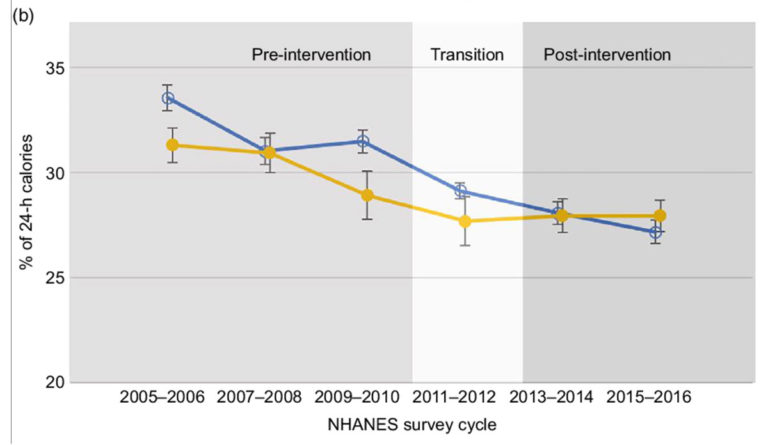What's for Lunch?
Changes in school nutrition standards did not change levels of fruit and vegetable consumption. However, both sugar consumption and obesity prevalence decreased.

Read Time: 2 minutes
Published:
School lunches can reduce childhood food insecurity and obesity. Michelle Obama’s focus on childhood obesity in her Let’s Move campaign highlighted the impact of school lunch on the health of children. The national school nutrition standards were updated in 2010 as a result of the Healthy, Hunger-Free Kids Act and Obama’s work. The new standards require more fruit and vegetables and increased nutritional value in prepared food.
Jenny Jia and team looked at data from the National Health and Nutrition Examination Survey from 2005 to 2016 to determine if changes in school lunch nutrition standards resulted in improved nutrient consumption. The researchers studied weekday fruit and vegetable consumption for those who participated in the National School Lunch Program (NSLP) compared to those who didn’t. They also looked at solid fat and added sugar intake and prevalence of obesity.
Changes in school nutrition standards did not change levels of fruit and vegetable consumption. However, both sugar consumption and obesity prevalence decreased. The graph above shows solid fat and added sugar intake as a percentage of 24-hour energy consumption. The blue line represents participants in the National School Lunch Program and yellow indicates non-participants. Children enrolled in the NSLP consumed significantly less solid fat and sugar after the new standards were implemented.
Fruit and vegetable consumption is hard to change, so those attempting to implement more nutritionally valuable school lunch programs and reduce childhood obesity should focus on reducing sugar and fat content in meals.
Jia, J., Moore, L., Cabral, H., Hanchate, A., & LaRochelle, M. Changes to dietary and health outcomes following implementation of the 2012 updated US Department of Agriculture school nutrition standards: Analysis using National Health and Nutrition Examination Survey, 2005–2016. Public Health Nutrition, 2020.



